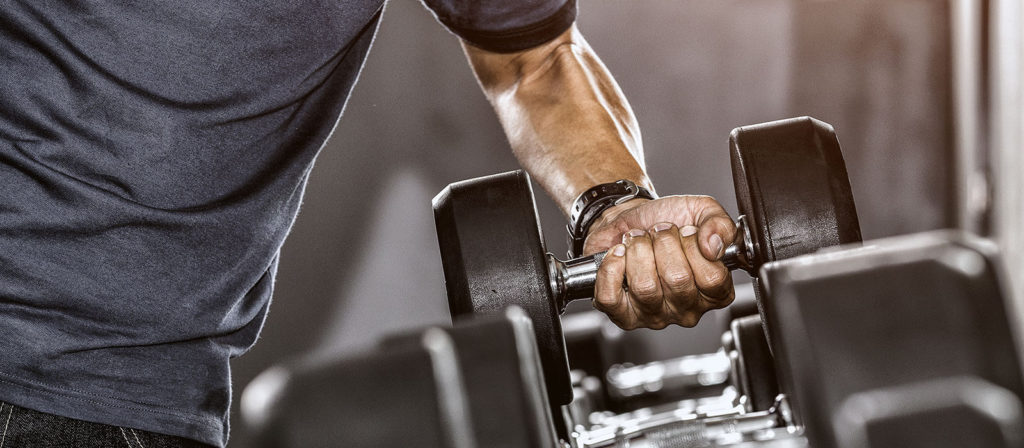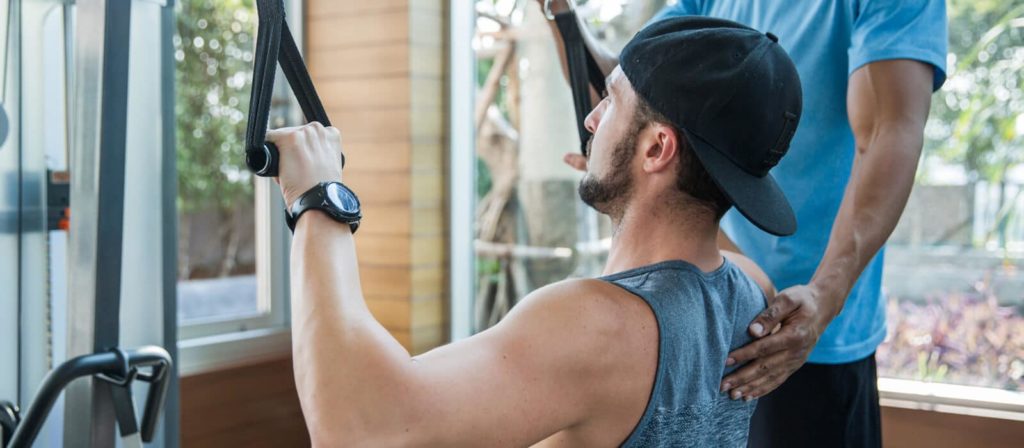ARTICLE AT A GLANCE
The bench press isn’t called “the king of upper body exercises” for nothing. If your goal is to strengthen your chest, arms, and shoulders, bench presses are non-negotiable. However, proper form and technique are especially important to ensure maximum results as well as safety. This blog explores why the bench press is one of the most effective exercises you can do, and runs down tips on how to master the move. You’ll learn:
The bench press is the king of upper body exercises. Whether your goal is to increase your strength, muscular development, or fat loss, the bench press should be a regular part of your routine. That’s because bench presses help you develop the most important aspects of your upper body strength, including muscle mass for your pectorals, deltoids, and triceps.
Compared with pec isolation exercises, such as cable cross-overs and dumbbell flyes, bench presses give you the most bang for your buck. They stimulate more muscle mass and are more metabolically demanding, and they’re customizable to build and tone specific upper body muscle groups.
For example, you can incline or decline the bench to target upper or lower chest muscles, respectively. You can grip the bar with your hands closer together so that the narrower grip works your triceps more intensely, or you can take a wider grip to give your shoulders a more thorough workout.
The more you push, the more calories and fat you burn, making bench presses just as beneficial for losing weight as cardio. However, the range and diversity of the exercise also makes safety and form especially important. To help you master one of the most effective exercises out there, we’ll go through a few tips on bench press safety and ways to improve your methods.
Safety First, Then Variety
There’s a lot of room for error when you’re lying prone and lifting a heavy barbell over your chest. For optimal safety, always bench press with an experienced spotter or in a power rack with safety pins set at chest level. You don’t want to get stuck underneath a heavy barbell if you fail to lift it. Keep these additional safety tips in mind during every rep:
- Wrap your thumbs around the bar. It’s rare, but occasionally you’ll see someone drop a barbell during a bench press. That’s usually because they aren’t using their thumbs to grip it.
- Use safety collars at each end of the bar, and double-check them before you start each rep. If your press is uneven, the plates could slide off the end of the bar without the collars.
- Make sure the bar unracks from directly above your eyes when you lie down. If it’s above your chest at the start, you’re going to hit the uprights with the bar during your reps.
- Plant your feet firmly for maximum power. Bench pressing is an upper body exercise, but you’ll be much stronger if you tighten your quads and push your feet into the ground.
- Don’t bounce the bar off your chest — it’s unsafe. It also uses up elastic and kinetic energy. A controlled tempo is safer and maintains tension on your pecs, shoulders, and triceps.
- Always warm up to boost blood flow and reduce your risk of injury. Start with single sets at lighter weights and decrease the number of reps as you increase the weight.
- Include a balanced ratio of pressing to pulling in your workout routines. For every set of bench presses you perform, do a set of seated cable rows, chest-supported rows, dumbbell rows, or barbell rows.
- Use trap-3 and external rotation exercises to strengthen your shoulders. They aren’t the most exciting exercises, but strong shoulders are key to mastering the bench press.
Once you’ve mastered the safe bench press, you can start customizing your routine to get the most results out of each workout. In addition to the adjustments to bench incline and grip width we mentioned before, consider these additional bench press variations.
Cambered/dumbbell bench press:
A cambered bar is a specialty bar specifically designed to increase the range of motion you can achieve during your bench press. This can help develop strength out of the bottom position. If you don’t have access to a cambered bench press bar, you can use dumbbells for a similar effect. Emphasize the eccentric portion of each rep and use a full range of motion for maximum results.
Bottom position pin press:
You’ll need a power rack for this exercise. Set the safety pins 1 inch to 2 inches above your chest and use a controlled tempo to lower the bar to the safety pins. Remember: Don’t bounce the bar. Instead, pause it on the pins for two to five seconds on each rep. This forces you to overcome inertia on every rep, which will help you develop starting strength.
Overhead press:
Weak shoulders are kryptonite to bench pressing power, and overhead presses are an excellent solution. This comes with several options: seated, standing, barbell, dumbbells, or behind the neck. If pain or a past injury prevents you from performing an overhead bench press without modifications, a shoulder press machine or high-incline dumbbell press might be a better option.
Dips and close-grip bench press:
Dips can be as beneficial for triceps strength as close-grip presses. Keep your torso upright and use a full range of motion. Add a dip belt if your body weight doesn’t offer enough resistance.
When doing close-grip presses, be sure not to place your hands too close together. Your index fingers should be about 14 inches apart, though a little wider or narrower is OK to account for your shoulder width.
As you gain mastery over the versatile bench press, varying your routine becomes easier, and the benefits of the exercise will be even more pronounced. Always practice safety first, and experiment with different forms to find what combination works best for your goals.
Tony Soaib has worked as a personal trainer and strength and conditioning coach since 2007. Since then, he’s worked with a wide range of clients including athletes from MLB, MiLB, NFL, Nippon Professional Baseball, United Soccer League, and NCAA, as well as Military Special Forces personnel, and executive clients. You can contact him @tonysoaib on Instagram.






